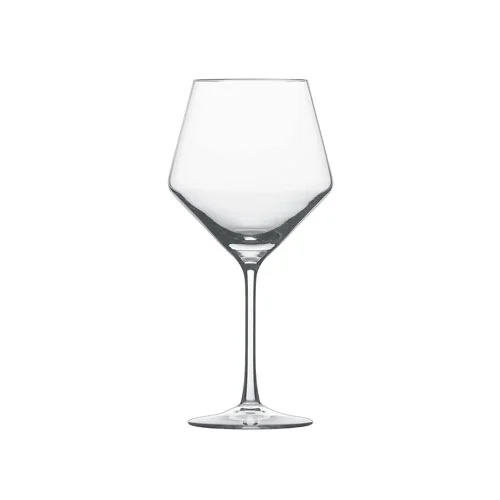The Best Wine Glasses for Every Bottle in Your Wine Cellar
A guide to Fine wine stemware
Does the wine glass really make a difference?
Tasting wine is a subtle art (and, for some of us, a life pursuit). For the casual drinker of mass produced bottles, glassware probably won’t make a huge difference in your experience, and you can skip right to our pick for all-around best wine glass if you don’t want to read on and nerd out. For the wine collector and enthusiast, the right glass can most definitely make a difference in the tasting experience.
Different types of wine glasses are meant to showcase different types of wine, keep them at the right temperature while you drink, and deliver wine to the right parts of your tongue while you swirl, sip and swish.
So whether you’re a wine collecting beginner, or a long-time vintage wine collector, we’ve got you covered with our glassware guide including the glass vs. crystal debate, info on what each glass does best, plus our picks for the best wine stemware in each category.
Which are Better: Glass or Crystal Wine Glasses?
The first thing you’ll need to decide before investing in the best wine stemware, is whether to go with crystal or glass.
Because of the higher mineral content in crystal, you'll get a thinner rim without the ridge you'll find on a lot of glass stemware. A thin rim is ideal for wine tasting because it makes sure the wine goes to the right part of the mouth, so crystal is the best choice for serious wine connoisseurs.
For those of you who bust more wine glasses than moves on the dance floor, or have a lot of large parties, opt to keep the majority of your stemware collection in glass, and consider in investing in a couple crystal glasses for special occasions and bottles.
Since this guide is focused on the best glasses for enjoying your wine collection, we've stuck to crystal, but we like the Libbey Signature Series as an affordable, everyday glass ($35 for 4 on Amazon).
Red Wine Glasses
Red wine stemware is going to feature a large bowl, and while there are many varietal specific glasses out there, the main two to consider for your collection are the Burgundy glass for lighter bodied, more delicate reds and the Bordeaux glass for bigger varietals like Cabernets and Syrahs.
The main difference? The additional height and smaller bowl of the Bordeaux glass delivers wine further back in the mouth to maximize flavor, while the shorter, larger-bowled Burgundy glass aims the delicate flavors of Pinot Noir and other subtle reds to the tip of your tongue.
Bordeaux Wine Glasses
Zalto Denk'Art Bordeaux Glass
This splurge-worthy, feather-light mouth blown crystal showcases wines like no other glass we've experienced and we love the elegant angles and proportions.
BURGUNDY Wine GLASSES
Riedel Veritas New World Pinot Noir Glass
The tulip shape and thin, seamless rim on these glasses make them a standout for sniffing, swirling and sipping delicate, nuanced reds like Oregon's Pinot Noirs.
White Wine Glasses
In general, white wine glasses are going to have a shorter stem and smaller bowl than red wine glasses, and while they do come in different shapes for different varietals, we think the difference in the tasting experience across glasses is a bit less noticeable than it is for red wines.
If you favor higher acidity whites, like Pinot Grigio, select a more narrow bowl like our picks below. If you're a fan of fuller bodied whites, such as oaked Chardonnays, opt for a glass with a wider bowl like the Schott Zweisel Burgundy Glass above.
Riedel Veritas Riesling/Zinfandel Glass
The tall, narrow bowl of these glasses make it a good choice across lighter-bodied whites, with the added bonus of feeling great in the hand and creating a sophisticated look on the table.
Sparkling Wine Glasses
Flutes are ideal for drinking champagne because the narrow width exposes less of the liquid to the air, which will keep your Bubbly bubbling for longer. The height also highlights the complexity and nose of sparkling varietals.
Gabriel Glas Champagne Flutes
We prefer a tapered shape for our flutes to better showcase the nose on sparkling wines. These sophisticated and airy flutes show sparkling wines beautifully.
Best All Around Glass
Riedel Veritas Cabernet/Merlot Glass
If you’re just getting started with wine collecting and looking for one stellar glass for all of your wines, we recommend this one. The bowl is big enough to bring out the complexities of bigger reds, it’ll do for a Pinot in a pinch, and can stand in for white wines as well.











